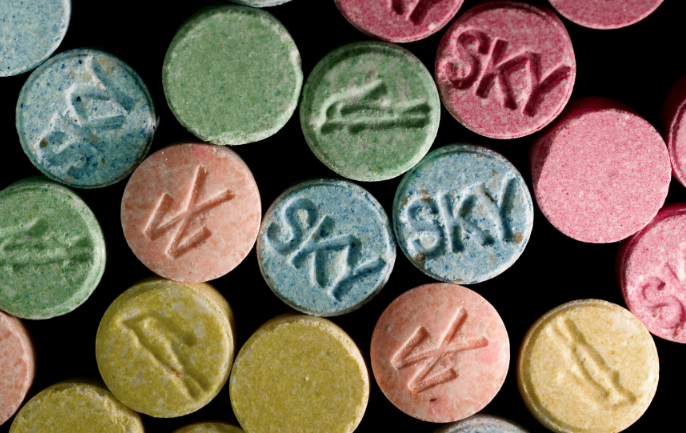These pills provide the consumer with a sense of intimacy and carefree joy and are increasingly present at parties, concerts and music festivals. On the surface, they seem relatively innocent and playful. The truth regarding these mysterious capsules lies behind their appealing surface and within the white powder held inside. ‘Molly’, the nickname for the synthetic psychoactive drug MDMA, has a reputation for being a cleaner form of ecstasy. However, researchers are discovering Molly is not as harmless as it seems – it is rarely as pure as many are led to believe. This dangerous drug also has adverse side effects that can be potentially fatal. In addition, contrary to what some think, Molly can be extremely addictive.
Molly gained popularity when word spread that it was less dangerous than ecstasy, which is known to be laced with a wide array of other drugs such as heroin, meth and cocaine. However, studies have found Molly is usually laced as well. Because MDMA is illegal in the United States, consumers have no way of knowing what the tablets hold inside. The contents can range from ibuprofen to the deadly para-methoxyamphetamine (PMA), which are often sold as ecstasy. PMA raises body temperature and heart rate and it can become dangerous when taken in large doses. Since some consumers do not realize their Molly tablets may contain PMA, they may take the usual dosage of Molly, which would equal a lethal dosage of PMA.
“A lot of people don’t think Molly is dangerous but no one really knows what it consists of,” said junior Hannah Gold.
Molly is known for reducing anxiety by inducing euphoria. Many people are disillusioned to believe that this drug lacks fatal consequences. Difficulty concentrating, dehydration, dry mouth, depression, insomnia, dizziness, convulsions, hallucinations, increased heart rate, increased blood pressure, coma and death are just a few possible side effects that Molly might yield. Some take this drug at concerts in order to amplify the experience because the loud music and flashing lights pair with the drug for a synergistic effect. The hot environment and the vigorous movements along with MDMA interfere with the body’s ability to regulate its temperature, which can lead to hyperthermia, or the overheating of the body. Hyperthermia can result in heart and kidney failures that could be deadly.
“When depleted of natural occurring neurotransmitters, youth can fall into depression,” said Susan Toman, a guidance counselor in Southold, New York to the Riverhead Patch. “It can be for a short period time, while others may need to be hospitalized. We need to stay current to battle the romanticizing of these dangerous substances.”

Although some believe otherwise, Molly can be addictive. If one is a common user, he or she may undergo withdrawal symptoms and impaired behavior and judgment. Since MDMA consumers experience such a high when on the drug, the withdrawal symptoms can be especially difficult for one to handle. The absence of the happy and warm feeling that comes when Molly is ingested can lead to depression and in order to avoid such feelings, some opt to use the drug regularly. A person’s genes and living environment are significant factors that contribute to a person getting addicted to a drug like MDMA. According to National Institute of Drug Abuse, the neurotransmitter systems targeted by
MDMA are the exact systems also targeted by other addictive drugs.
Molly is often taken as a tool to have a good time and users are usually unaware of the consequences that may result. A common misconception is that Molly is a cleaner form of ecstasy and is therefore not as harmful. However, Molly can indeed be dangerous and addictive. As Coachella approaches, many will cross paths with Molly and some may succumb to its enticing lure. However, the dangers of “popping Molly” are as serious as ever, and as time goes on, Molly’s good reputation will deteriorate further.








